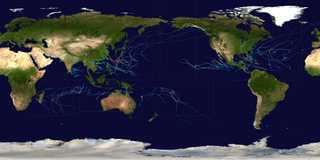See also
- List of storms named Christine, another similar name used in several tropical cyclone basins
- List of storms named Cristina, similar name used in the Eastern Pacific basin
- List of storms named Kristine, similar name used in the Western Pacific basin
- List of storms named Kristy, another similar name used for tropical cyclones in the Eastern Pacific basin


